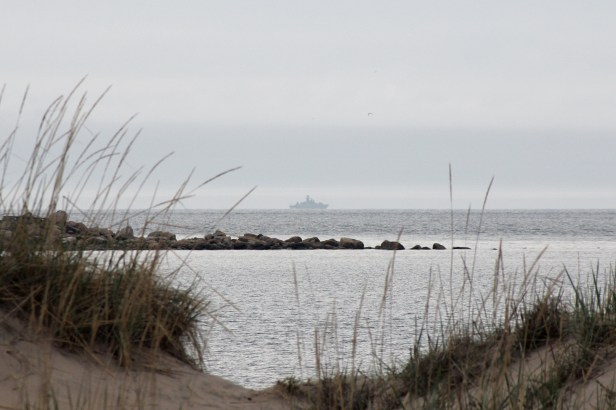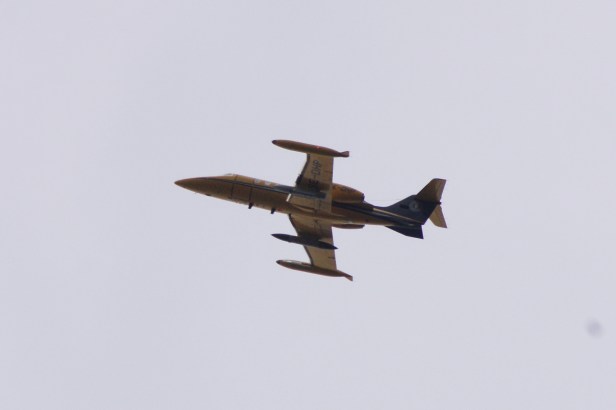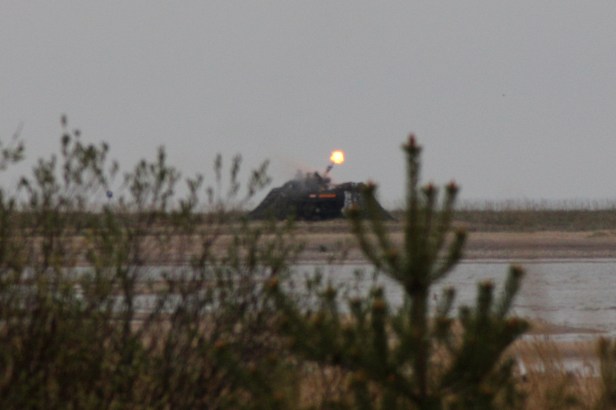At first glance, Vattaja firing range looks like an anachronism in the Finnish Defence Forces. At a time when the force as a whole has largely disappeared from the greater Ostrobothnian area, the location of a minor firing range at the coast seems strange.
However, looking closer, the reasons become clearer. Featuring a considerable stretch of coastline facing the open sea, it allows for joint exercises involving not only ground based units, but fast jets and surface ships as well. Its location far from the Russian listening posts at Gogland (and potential ‘trawlers’ running around in the Gulf of Finland) is also beneficial when practicing emission heavy scenarios, such as anti-air warfare.

These benefits are utilised in the twice-yearly series of air defence exercises, simply named “Ilmapuolustusharjoitus” (Air defence exercise), having been renamed for the first edition this year from the earlier “Ilmatorjuntaharjoitus” (Anti-air exercise). The reason for this renaming is unknown, but one guess is that the exercise has evolved to become more of a joint exercise as opposed to a pure ground-based air defence event. The first exercise kicks off in May each year, and IPH 1/16 has been taking place for the last two weeks. The first week, the so called “Firing phase”, emphasizes live firing against both towed and sub-scale targets, while the second week is the “Battle phase” and pits the air force against the ground and surface units in different scenarios (obviously, no live ammunition is used during this phase).

For the ground forces, forces from three differnt brigades brought more or less everything from the humble NSV 12.7 mm heavy machine gun to the NASAMS 2, including Crotale and Stinger missiles, as well as ZU-23-2 ‘Sergei’ and Oerlikon KD/GDF anti-aircraft guns. The air force, which has overall responsibility for the exercise, brought its F/A-18C Hornet’s, both for their own live firings as well as for target duty/practicing operations against enemy air defence networks. The navy, busy with several exercises during the second half of May and preparing for the upcoming BALTOPS 16 kicking off early June, sent a single Hamina-class FAC, which also performed live firings with its Umkhonto-IR missile system. In addition, the navy brought a small landing craft, probably for SAR duty and for policing the safety zone.

The current state of the Finnish air defence is a hot topic, especially after the launching of the HX-fighter program and the withdrawal of the Buk M1 in favour of the shorter-ranged NASAMS 2. The majority of the gunbased anti-air assets are also approaching the end of their lifespans, and although the Marksman system got reintroduced into action after being transferred from T-55AM to Leopard 2A4 hulls, the air defence is looking worrisomely thin on a longer horizon. Partly to offset this coming reduction in lighter AAA systems and partly to replace older Soviet MANPADS, a considerable (but undisclosed) quantity of FIM-92C Stingers where bought, with the first having been fired last year at ITH 2/15, and more being employed this year. A Finnish particular is the tactics to use cherry pickers as launch platforms. These are employed to get above the treetops to secure a good enough line of fire. As Finland is heavily forested and relatively flat, launching the missiles from the ground gives little time for spotting and acquiring a firing solution when hostile aircraft approach at low level and high speed.

An interesting visitor this year was Saab’s Special Flight Operations’ Learjet 35 which flew target flights. The aircraft can perform both target towing and different electronic warfare missions, missions which have earlier been handled by the air force’s own Learjets. The plane has the ability to fly “adversary flight profiles with or without Electronic Counter Measures (ECM) for AA and AD systems”, and it did employ aggressive flight tracks at low altitude over the training range. While Saab won’t comment on exactly which EW systems are mounted aboard at any given time, the aircraft did feature two unspecified (and different) pods, and it is interesting to note that Gripen’s active EW suit is one of its stronger sales points, with already the 39C apparently being able to give “nasty shocks” to RAF Typhoon pilots. It is entirely possible that the air force took the opportunity to get a feel for Saab’s EW know-how in advance of the proper HX evaluation (or that Saab took the opportunity to demonstrate their products, whichever way one looks upon it).

A closing statement on the pictures taken during the exercise: all pictures were taken from outside the exercise area, and in several instances there were officers standing close by, apparently okay with me running around with a tele lens. A few of the pictures were taken so that they show part of the area declared off limits to the general public for the duration of the exercise. Despite reading through the notice posted at the site and checking for signs in the terrain, I found no indication that photography was prohibited or restricted (with the exception of flying targets due to safety hazards). Still, I have used my own judgement and left out certain observations/pictures from this post, due to the potentially revealing nature of these.



I’ve been surfing online more than 3 hours nowadays, but I by
no means discovered any attention-grabbing article like yours.
It is lovely value enough for me. In my opinion, if all website owners and bloggers made excellent content material as you probably did, the internet will likely be a
lot more useful than ever before.
It’s actually a great and helpful piece of info.
I’m satisfied that you simply shared this useful info with us.
Please keep us up to date like this. Thank you for sharing. http://www.davehaak.com/
Tengo 45 años y me encuentro estudiando inglés más o menos 8 años.
El post lo he encontrado fascinante para aprender idioma
inglés. Me ha sido muy provechoso. Lo voy a anexionar a mis favoritos.
Le doy las gracias por el texto.
http://My5Amstory.com/2017/02/02/taking-the-field-one-last-time-2/